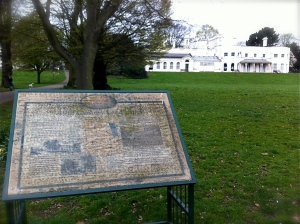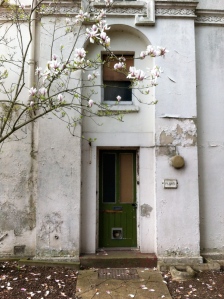In London, Z’s extraordinary school was about 20-30 minutes each way on a city bus. I used to write on the way back from the school drop-off each morning. I found this today on my phone, which I must have written an month or so before we left London.
“What a ghost town around here! Seriously, where is this mythical “Pure Pulp” blogger?
The answer, sports fans, is trying to reassemble a life after it was chewed up by a blender. So, I’ll just leave you with that metaphor.
The truth is, I am moving. AGAIN. And it’s a new adventure that fills me with equal measures of loss and the promise of new possibility.
Lately, however, I just want to fill my time writing extended love letters to London. These letters will be about TRUE love because the warts I see here are very much a part of my adoration, and I don’t enter into my affections as a tourist. I’ll miss all of London.
In an effort to be succinct, though I could make lists for days of the quirks and treasures and mysteries of this city, here’s the short of it:
I love London because it is so many things all at once. It doesn’t allow for myopic living.
Here’s the thing (bear with me): I love public transportation. For a girl who grew up just outside Flint, Michigan, the following is practically heresy, but I hate driving. I don’t like to be secluded in my own private box. I like to be in the world. The bus, the tube, they force you to look at, sit next to, smell, etc. people who are not like you.
Public transport offers a microcosm of the city, in that whatever tribe you travel in, you must constantly engage with others who have allegiances to other tribes. No matter how you classify yourself, you’ve got to interact with other faiths, cultures, languages, classes, etc. everyday.
Suburban living is, sometimes, a way to minimize these kinds of interactions by settling with a distinct tribe (as are the lifestyles of the super rich.) There’s nothing inherently wrong with choosing to live among like-minded people. Humans have gathered into like-minded groups for centuries, but doing so can come at a price. It can lull you into complacency. It can convince you that your ways are the best, that your perspective is the truest, and that your experience of the world is the most valid.
So, I’ll miss the bus–with its overheard conversations (sometimes full of joy at a finally summer kind of day, or even sorrow as the city sometimes puts the private on public display.) I’ll miss the international fashion show, the strange alliances brought about by bus diversions, hilarious children, and even occasional frightening misbehavior. I’ll miss the sense of being poured into the city’s infrastructure, rather than fighting it for personal gain.
I’ll miss. . .”
And then I wrote no more, but even this fragment seemed worthy of sharing–particularly as I’m fighting against the inward gaze that is commanded by chronic pain.
And now, sports fans, I begin shopping around: “I Miss the Bus: A Memoir of an Expat American in London.”
 I don’t recall ever having been in so much pain, so quickly–without injury or warning. Some friends kindly took Z for the afternoon, and my husband took me to Urgent Care. (I just moved here, so, of course, I don’t yet have a GP, and doubly OF COURSE, this all happened on a Saturday.) At the Urgent Care, when I checked in, I thought I was playing it cool, but the receptionist said, “We’re going to triage you. We’re going to see you next.” This is not what you EVER want to hear when there’s a waiting room full of folks at the Urgent Care, because the translation is, “Lady, there’s a lot of sick people here, but you are the sickest!”
I don’t recall ever having been in so much pain, so quickly–without injury or warning. Some friends kindly took Z for the afternoon, and my husband took me to Urgent Care. (I just moved here, so, of course, I don’t yet have a GP, and doubly OF COURSE, this all happened on a Saturday.) At the Urgent Care, when I checked in, I thought I was playing it cool, but the receptionist said, “We’re going to triage you. We’re going to see you next.” This is not what you EVER want to hear when there’s a waiting room full of folks at the Urgent Care, because the translation is, “Lady, there’s a lot of sick people here, but you are the sickest!”











